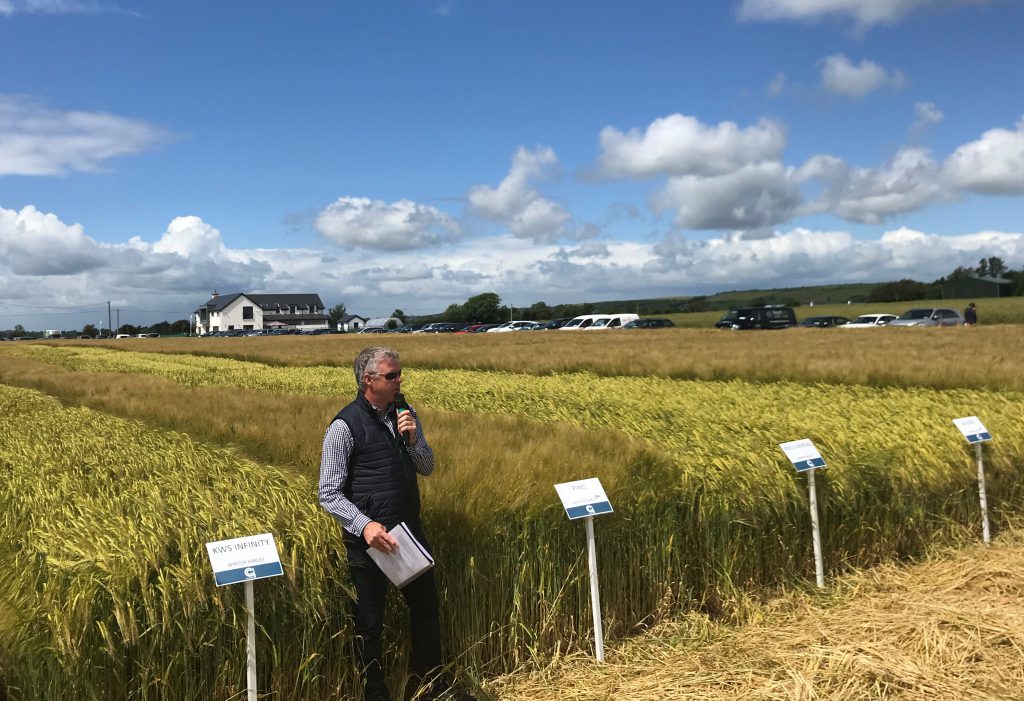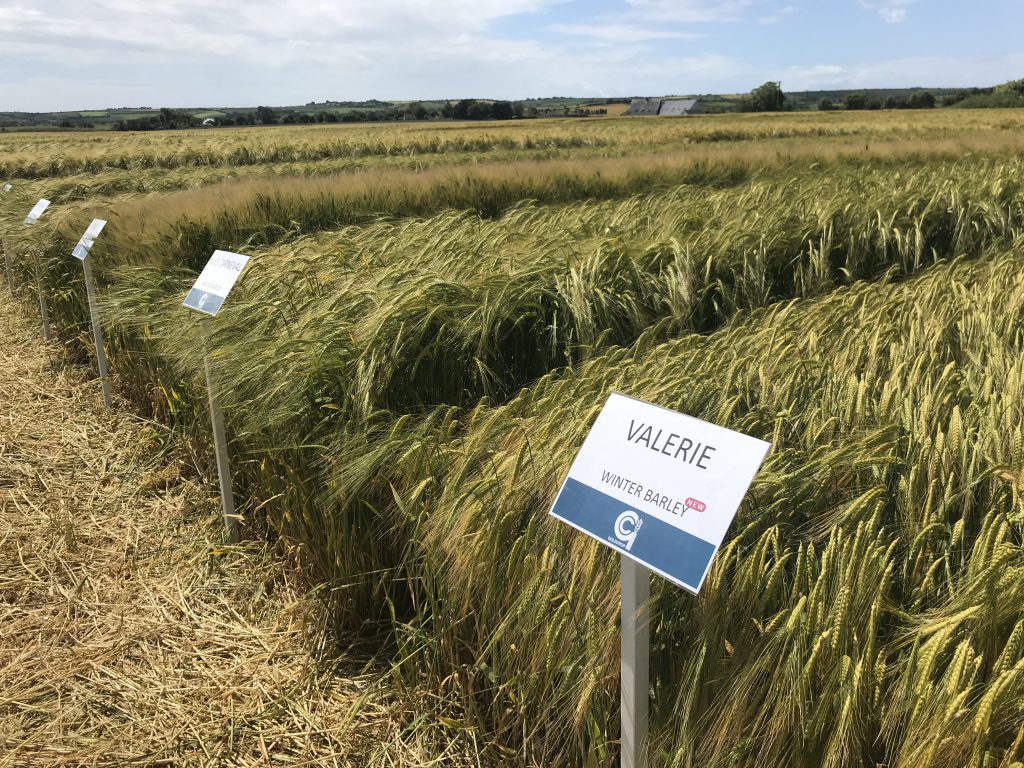Winter barley area has soared in recent years and increased from 56,000ha in 2018 to a massive 80,000ha in 2019, according to provisional results from the Department of Agriculture.
Speaking at the Goldcrop open day, Donal Fitzgerald put forward two main reasons for this increase and added that in 2006 the area of the crop sown was just 15,000ha.
“Last year, winter barley performed reasonably well. It beat the drought. We had good yields, typically speaking 3.5-4t/ac in many places and the straw that came from the winter barley crop was highly lucrative.”
He added that the crop provided approximately double the grain output as spring barley and, as a result, winter barley area increased as growers decided that they needed to risk-proof their systems.
Challenges lie ahead
However, winter barley is not without its challenges; no more so in 2019, as tillage farmers look to a season without neonicotinoids.
Donal, who is the general manager of arable seeds at Goldcrop, stated that the first challenge that has to be overcome is the loss of Redigo Deter (a neonicontinoid seed dressing which provided control of barley yellow dwarf virus).
Also Read: Neonicotinoids are bannedThe use of the product was increasing year-on-year. Donal added that last year approximately 70% of the seed sold was treated with Redigo Deter.
“It gave huge confidence when you put the seed in the ground in the last week of September or first week of October.
“This year, if you look around at fields of winter barley the levels of virus infection are quite low. Contrast that with the spring and there’s lots of virus in spring barley.
People are saying to sow later. That’s imminently possible, but it might not necessarily be achievable.
“You can say ‘well, I’ll wait until the second week of October to sow winter barley’, but if you have hundreds of acres to get in the ground, the clock is ticking. You can only sow so many acres a day. You have to start somewhere and you can’t risk waiting.”
Look at varietal resistance
Donal told the audience at the Goldcrop open day held on its trial site in Shanagarry, Co. Cork, last week that: “The breeders are telling us that varietal resistance is not far away.
We have some varieties that are not just tolerant, but are now resistant to virus.
He explained that the varieties are “off the pace” in yield, but that they needed to be tested and added that the recent decision to classify gene-editing under the same regulations as GM has seriously hampered breeders’ abilities to be able to put a resistant trait into a good variety.
Grass weeds
Grass weeds are another challenge for winter barley growers and Donal pointed out the high levels of sterile brome in crops this year.
While he said this may ‘impinge” on the amount of barley that goes back into some rotations it may also force some farmers to look at break crops.
The really good operators in Ireland are rotating. They’re using break crops one in three [years].
Whether it be oilseed rape, beans, oats, maize or another crop these growers are increasing soil fertility as well as reducing weed problems by using a good rotation which allows problem weeds, in winter barley for example, to be controlled in the break crop.
Valerie – new variety
‘Valerie’ is on the way. The new two-row winter barley variety from Goldcrop will take up 14% of the winter barley seed availability in 2020 and it looks promising.
AgriLand reported on the variety last year. With numerous similarities to KWS Cassia, excitement surrounds its entry to the market.
While it does appear shorter among the winter barley varieties, its strong straw is a likeable characteristic that might make management a little bit simpler.
Time will tell of the variety as it makes its way to the fields in the autumn time.



